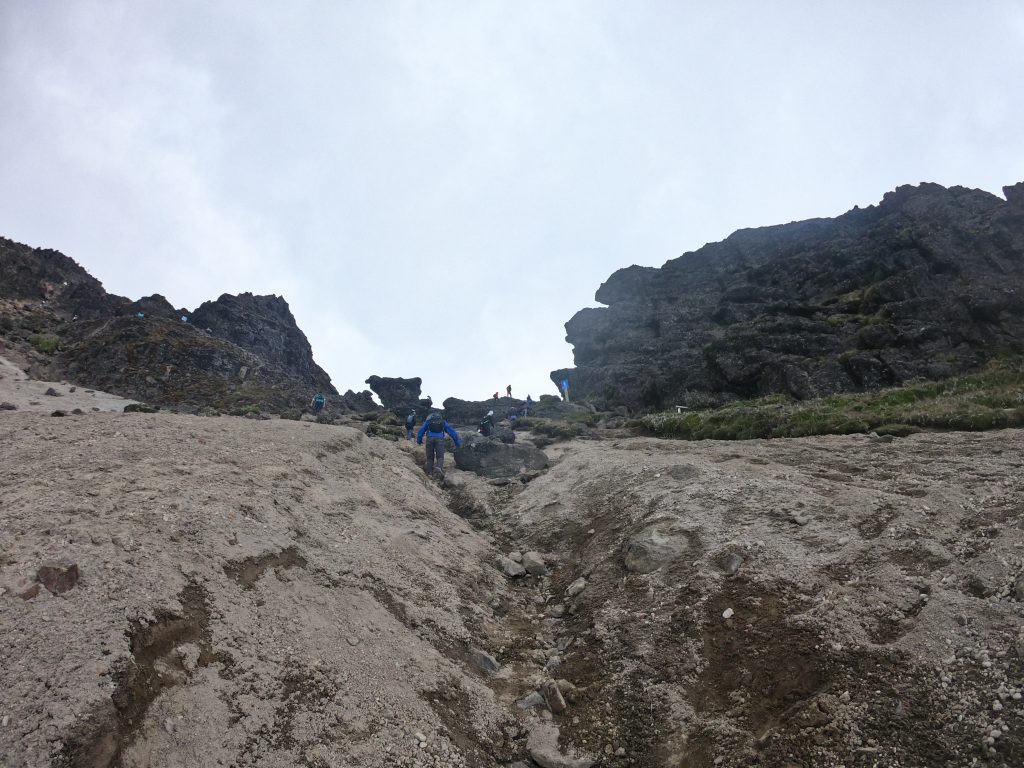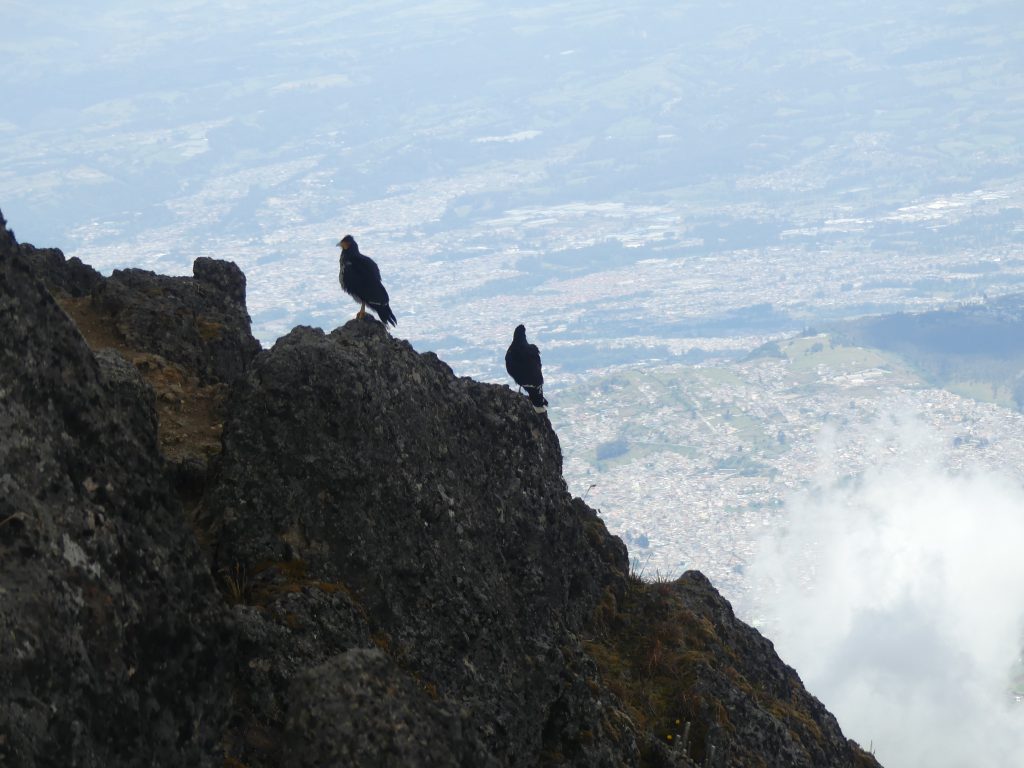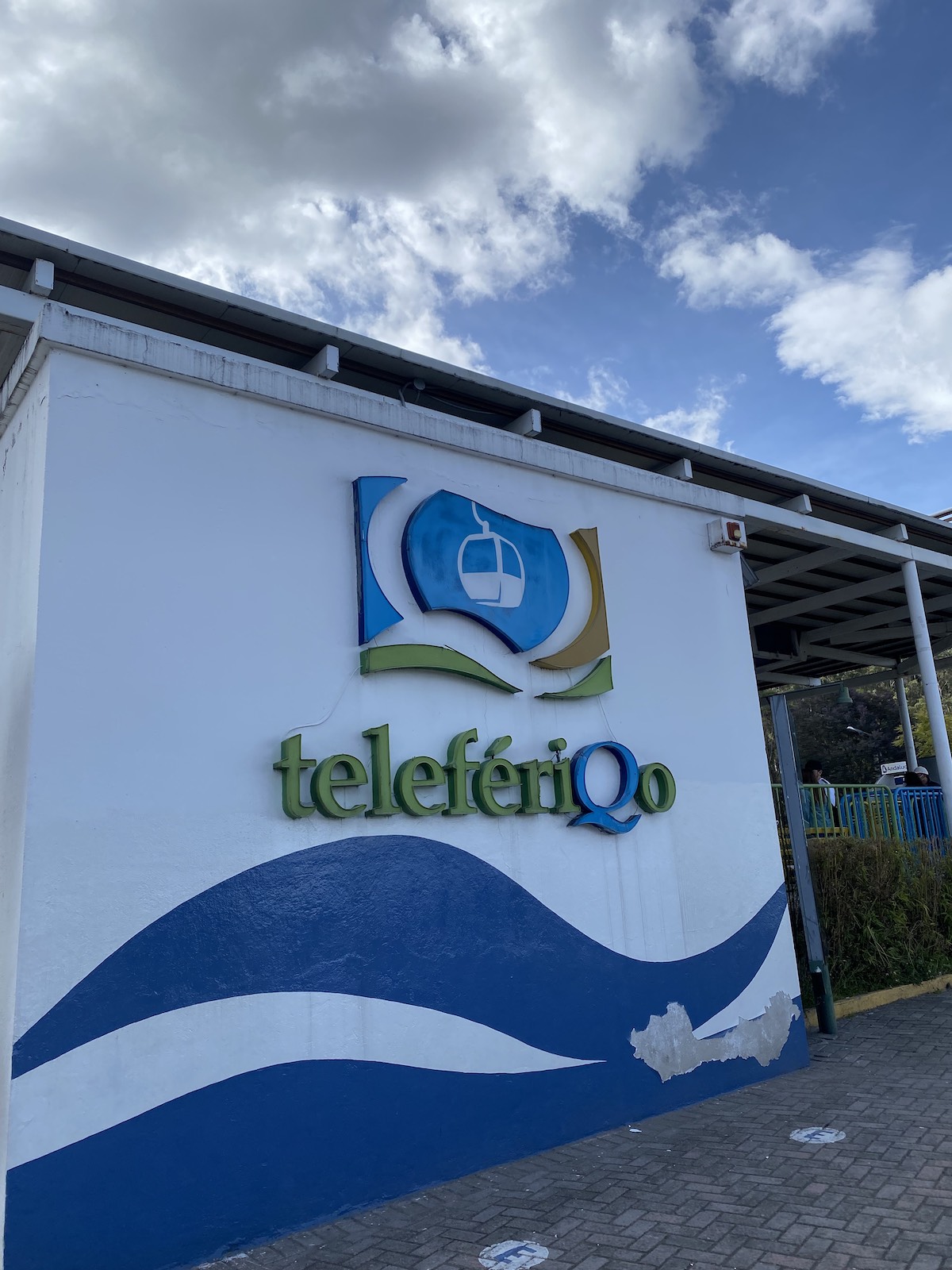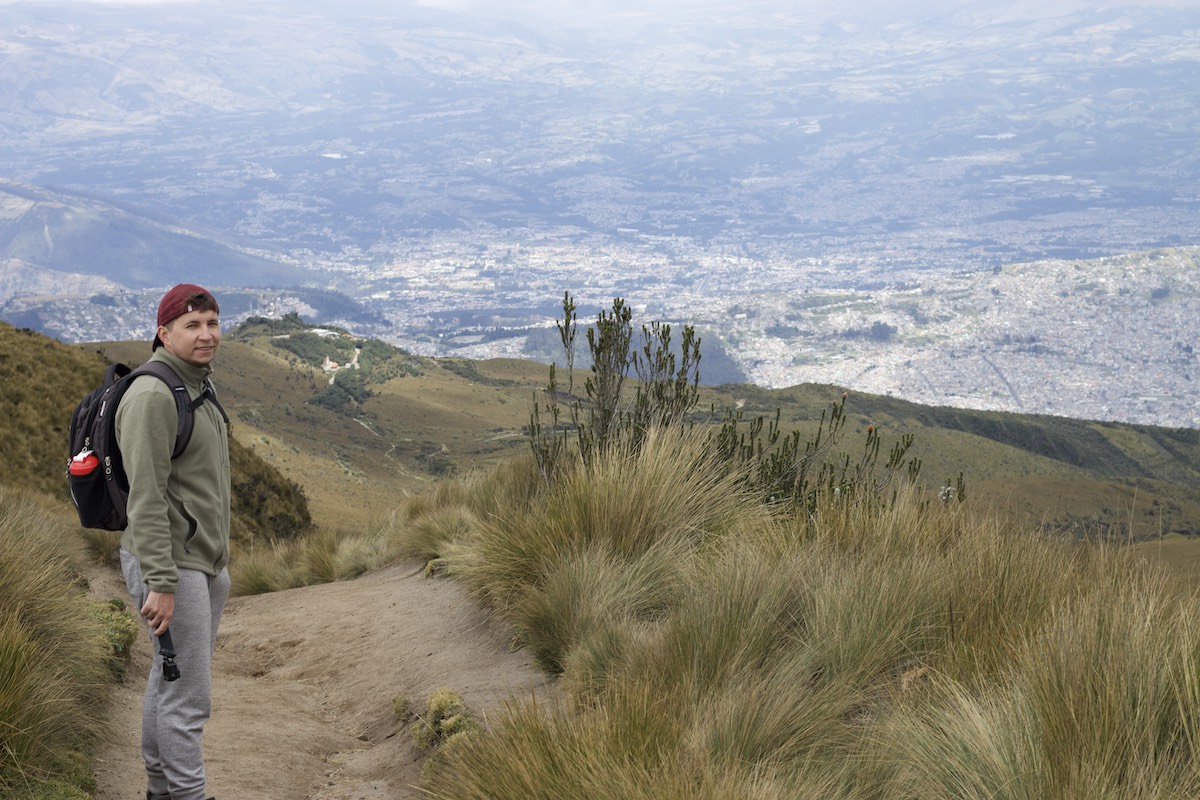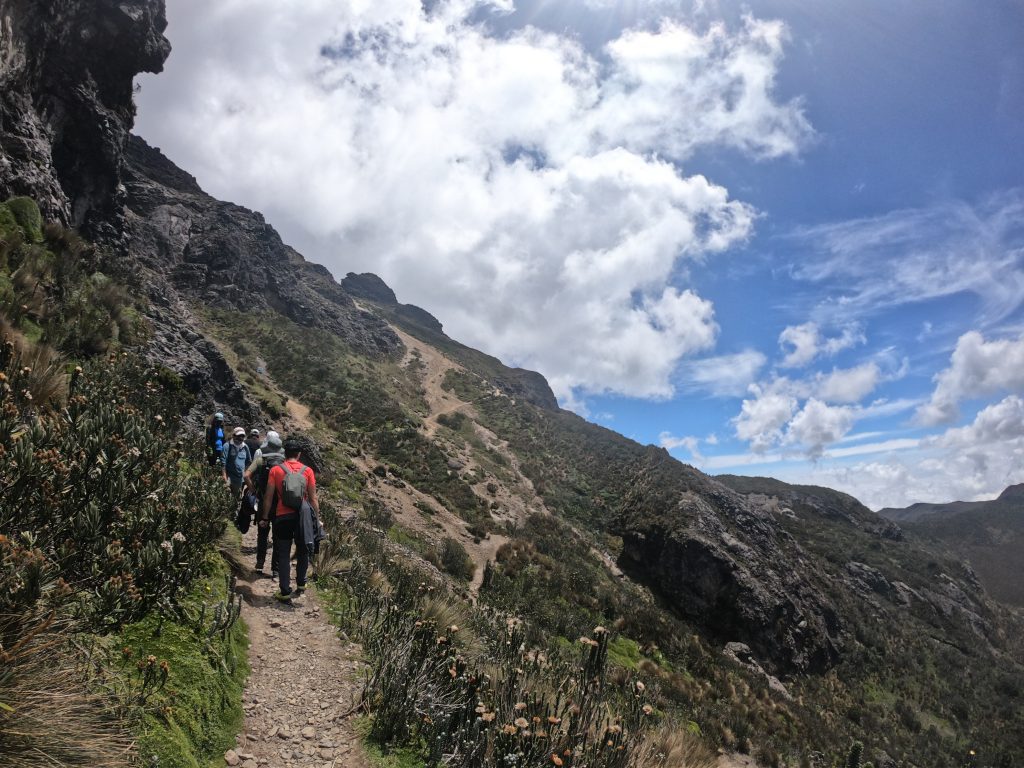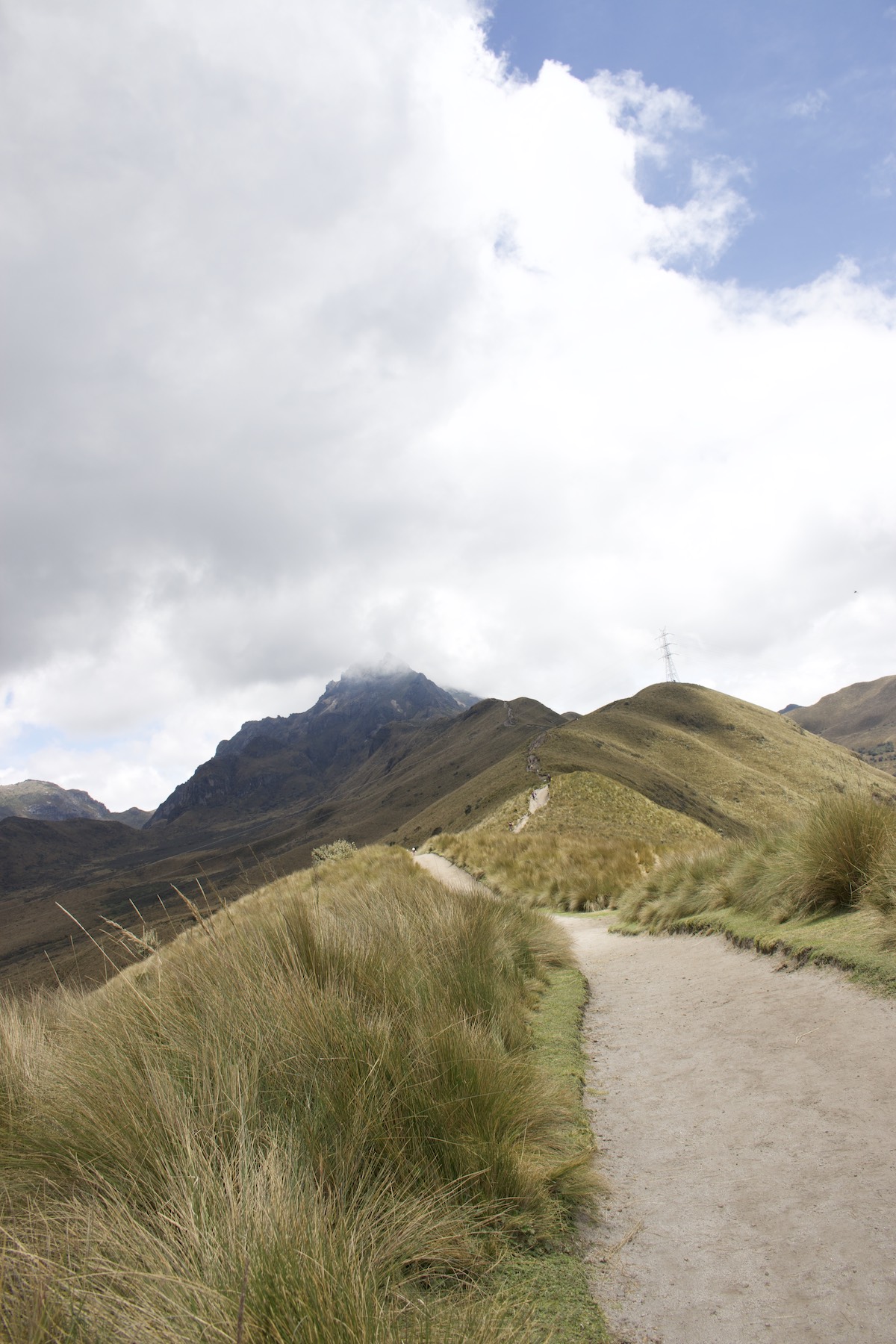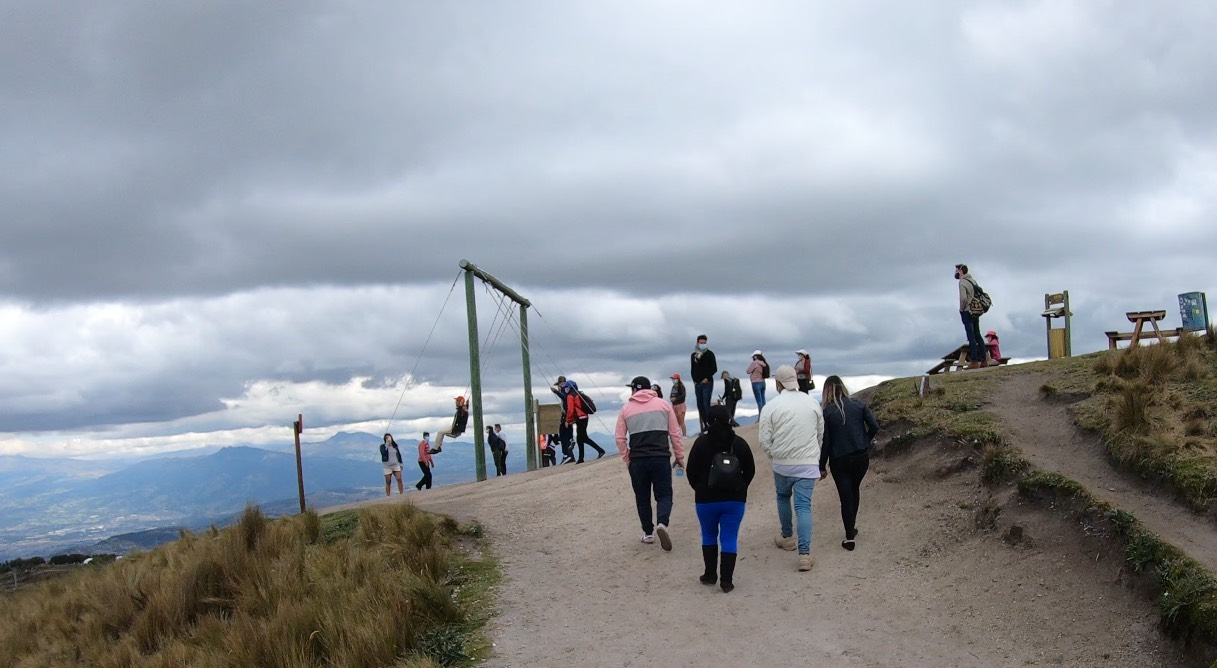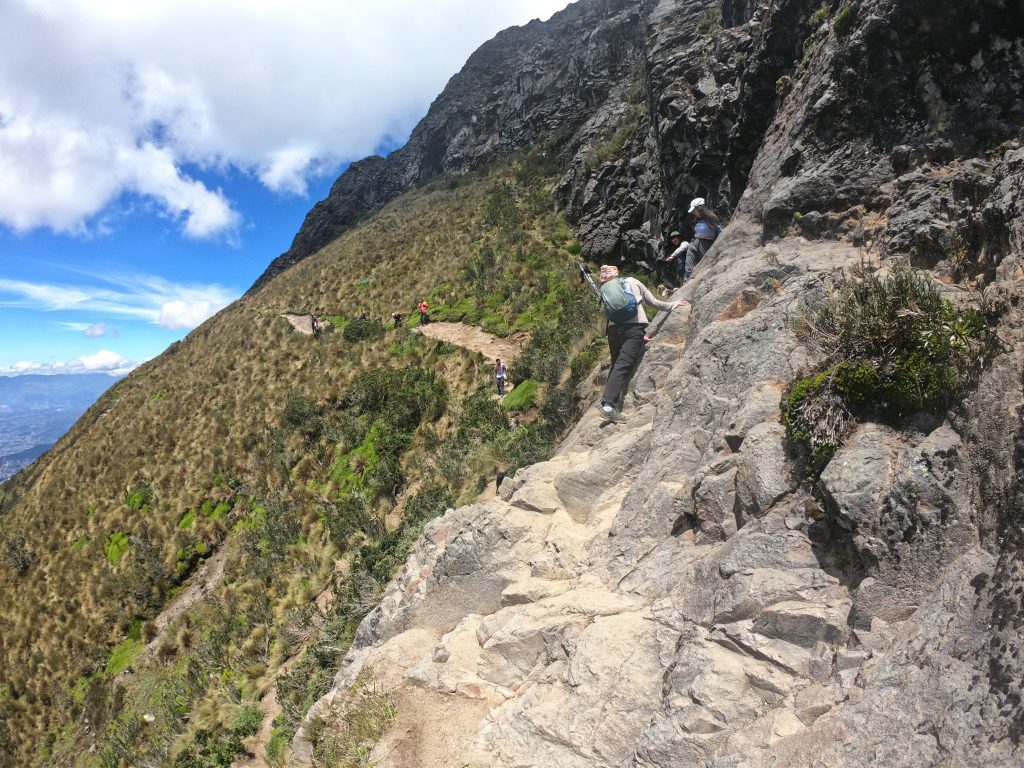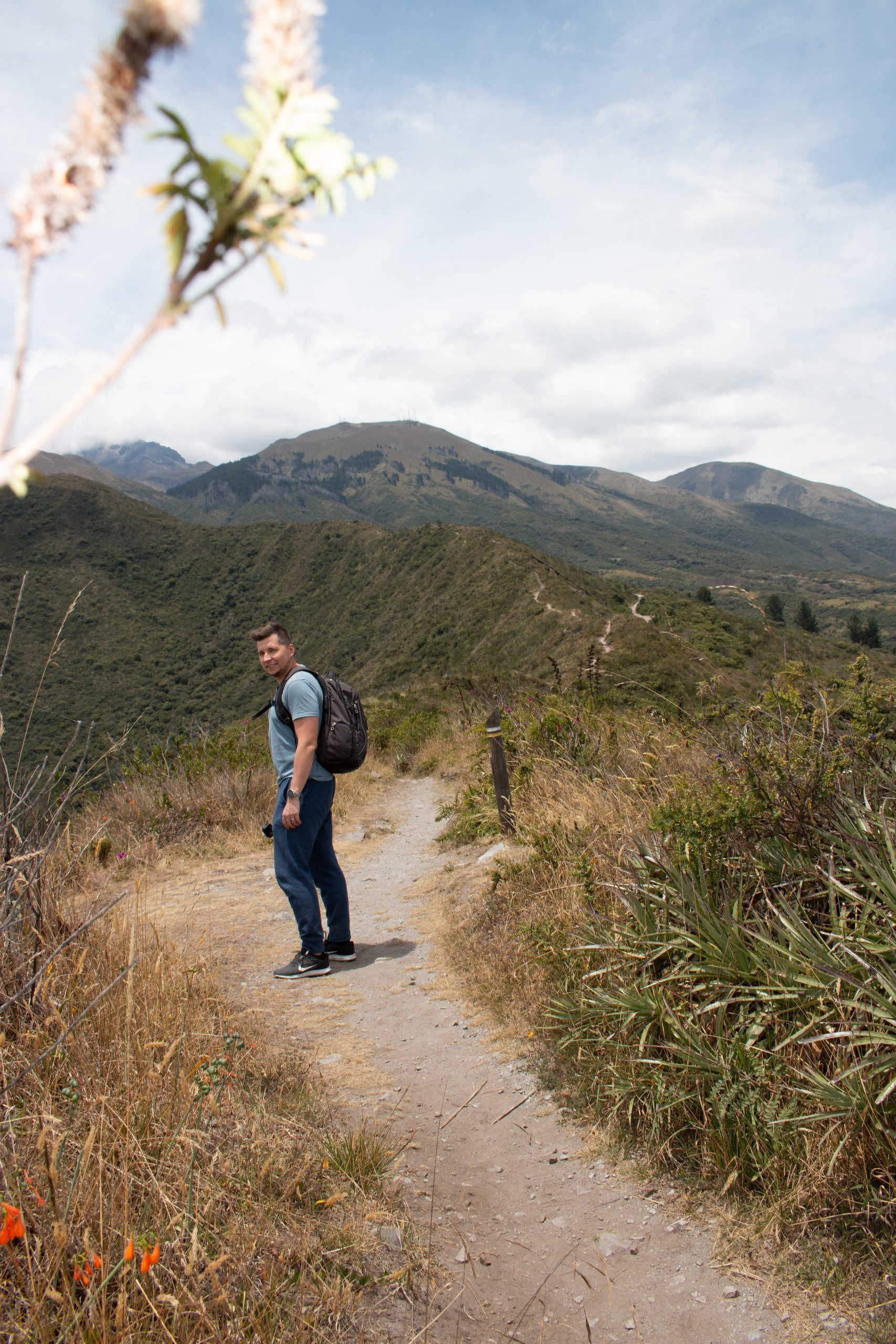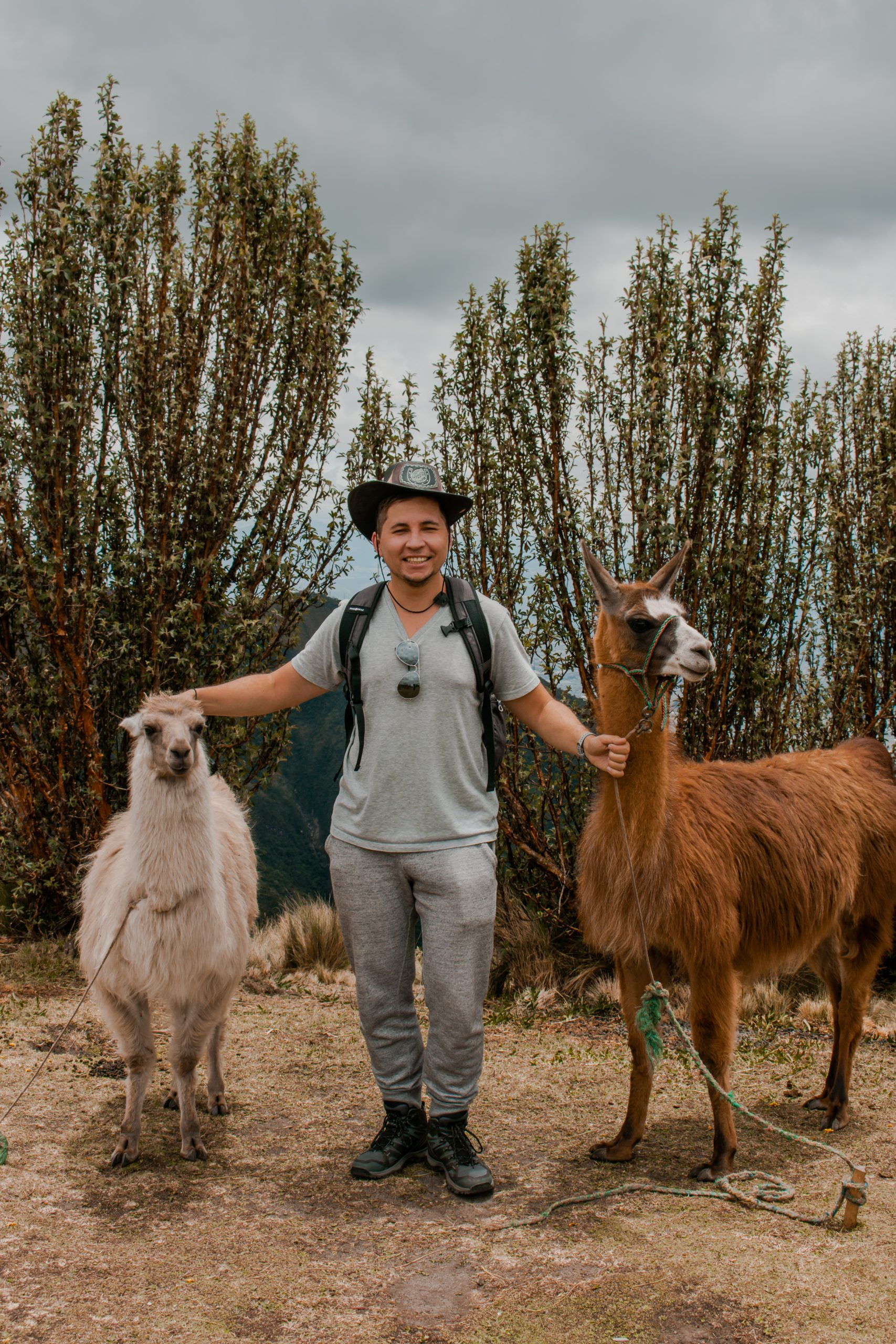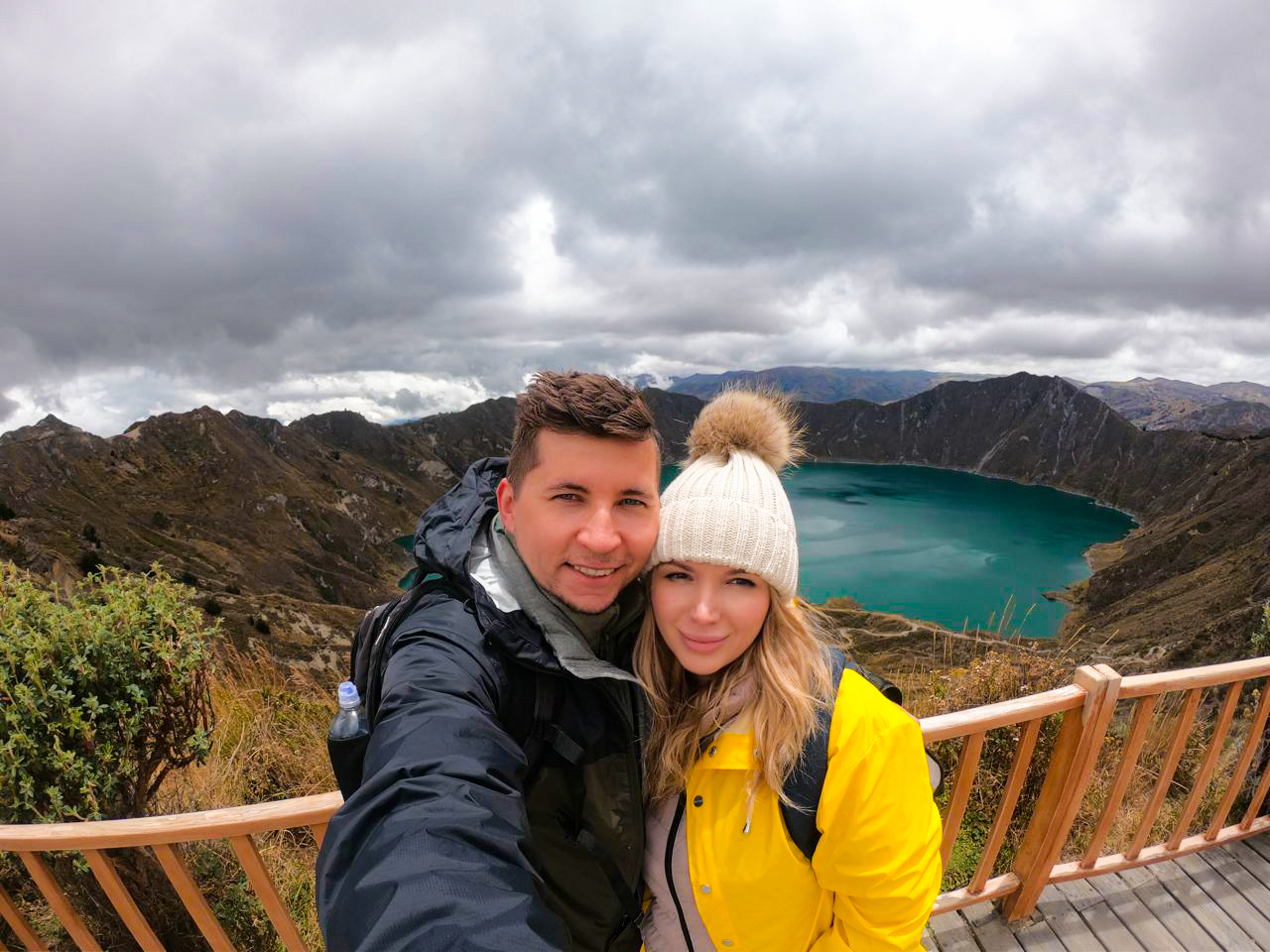The Teleférico, or TelefériQo (a clever blend of “teleférico” and “Quito”), is a gondola lift that took us from Quito’s city center up the eastern slope of the Pichincha Volcano to the Cruz Loma viewpoint. We were excited to check it out because it’s one of the top attractions in Quito.
The ride itself was quite scenic. As we ascended, the clear-walled cable car offered fantastic views. We could look down on slopes dotted with wildflowers and see cows peacefully grazing. And once we got higher, a breathtaking panoramic view of Quito gradually unfolded beneath us.
Interestingly, the area at the base was originally meant to be a busy commercial hub filled with shops and restaurants, but those plans never fully materialized. Despite that, the gondola remains a hit with both tourists and locals. For us, it was an unforgettable way to see the city from above.
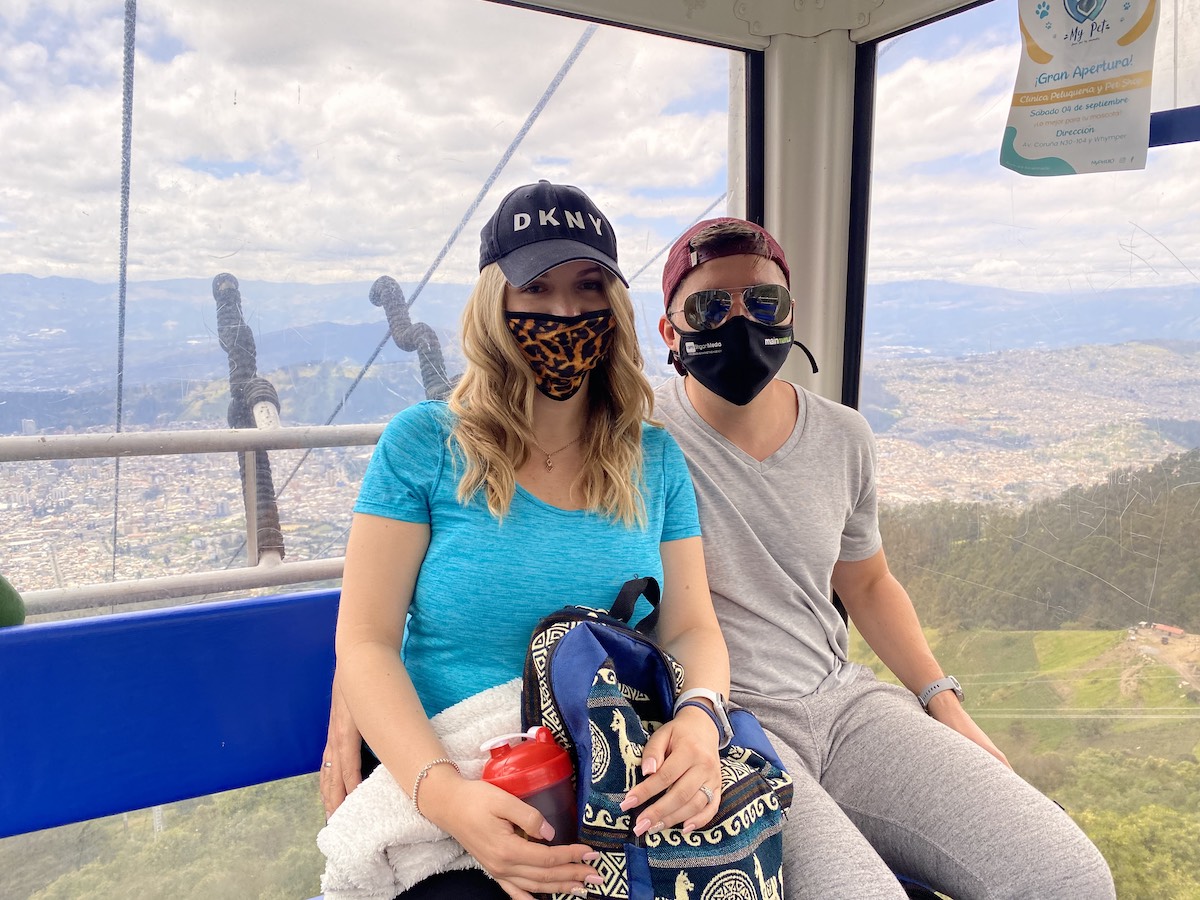
Once we reached the top of the gondola, we found that the adventure didn’t have to stop there. For those feeling up for it, a hiking trail continues even higher, leading towards the summit of the Pichincha Volcano. The trail looked challenging but tempting!
We took some time to admire the sweeping views of the Andean mountains that stretched all around us. It was surreal to be surrounded by such vast peaks, with the city of Quito appearing so tiny below. Whether you’re there to hike or just take in the scenery, the experience feels like you’re on top of the world!
This was, without a doubt, one of our favorite adventures in Quito! The TelefériQo ride is a must if you’re looking for stunning views of the city and the surrounding hills. For outdoor lovers like us, it was an absolute highlight. The cable car took us 2.5 kilometers (about 1.5 miles) up the slope of the dormant Pichincha Volcano, reaching the Cruz Loma summit in just 20 minutes.
As we ascended, it was amazing to watch Quito gradually shrink below us, giving way to sweeping vistas of the Andean landscape. The ride was both thrilling and serene—an experience we’d definitely recommend to anyone visiting the city!
Once on the top, you can explore the area on your own or get a free walking tour. Make sure to book in advance.
Looking back, our TelefériQo adventure needed more preparation than I expected – from timing our visit for clear views to dealing with the 4,100m altitude effects. Skip the uncertainty I faced and get a FREE personalized Quito trip quote from my trusted local experts who know exactly how to prepare you for high-altitude experiences. Your booking helps support both this blog and local Ecuadorian communities.
How to Get to El TelefériQo
Getting to the TelefériQo was super easy for us! Since it’s such a popular spot, every taxi driver knows exactly where to go. We just hailed a cab from Quito’s old town, and it only cost us $3. You can also ask your hotel to arrange transportation, but honestly, just flagging one down on the street is quick and straightforward. It’s definitely one of the simplest and most budget-friendly ways to get there!
If you’re looking to save even more on transportation, you can also take a bus! Any bus that runs along Av. Occidental will get you close. The closest stop drops you off near Vulqano Park, which is only about a 15-minute walk to the base of the TelefériQo. We opted for a taxi for convenience, but if you’re up for a little stroll, the bus is a great budget option!
TelefériQo Cable Car Cost
The cost for international tourists was $8.5 per person when we visited in 2022 but make sure to check the current price on the official website. Make sure to keep your gondola ticker as you will need it on the way down. You can also get one of these guide tours (it’s cheaper price than we were offered in Ecuador from locals lol):
TelefériQo Cable Car Experience
El TelefériQo really reminded me of a ski lift. The enclosed gondola has windows on all sides and benches to sit on, each one securely attached to a sturdy metal cable. As we ascended, I felt that gentle sway as we glided higher and higher, which was a unique experience in itself.
Once we reached the peak, which stands at about 4,100 meters (13,450 feet), the change was immediate — it was much colder, and I felt a bit light-headed from the altitude. There’s a building at the top with some small gift shops and a few eateries. I noticed they pump extra oxygen into the structure to help with the thinner air up there, which was definitely appreciated. If you’re planning this trip, I’d suggest taking ChlorOxygen a couple of weeks in advance to help acclimate to the altitude. Trust me, it makes a difference!
What to See When You Get Off TelefériQo
Stepping out of the cable car was like entering another world — swirling clouds wrapped around us, making it feel like we were standing on the edge of the sky. The summit of the volcano isn’t just a stunning natural wonder; it’s an adventure playground. We were incredibly lucky to have a clear day when we visited. It felt like we were on top of the world, with breathtaking views of Antisana, Illinizas, Corazón, Cotopaxi, Chimborazo, and Cayambe in the distance. We could even spot Vulcano Park far below.
For those feeling more adventurous, there’s also the option to hike to the peak of Rucu Pichincha. It’s about a five-hour round trip, but a word of advice — always check the fog conditions and start your hike before 11 a.m. to avoid getting caught in the afternoon mist.
The trail is rated as moderately difficult.
Might be best to book this free walking tour with a local guide who leads all the way to the peak of Rucu Pichincha.
Plan perfect trip to Ecuador & Galapagos
I spent countless hours researching everything about traveling to Ecuador, and I created this blog for fellow travel enthusiasts who want the best, most reliable information. But if you want to save time, we’ve partnered with the top local agency to plan your dream trip.
We were not able to do some photo ops at the Columpio en las Nubes — a side-by-side swing on top. It was way too crowdy.
We took a stroll through the lush foliage, following pathways and trails past rugged cliffs and steep slopes.
Mountain biking and horseback riding can be also enjoyed in the area.
We couldn’t resist the chance to ride horses while we were up there. For just $5 each, we enjoyed a 25-minute ride. Our guide was super friendly and made sure we were comfortable with our horses. After a short guided walk and plenty of picture-taking, we decided to explore more on foot. The scenery was just too beautiful to pass up, and walking around gave us even more time to soak in those panoramic views.
Going Back Down
When it’s time to head back down, make sure you’ve kept your ticket from the ride up. You’ll need it to board the gondola again.
Once you reach the base, you’ll likely want to grab a taxi for a comfortable ride back to town. After walking down to the entrance near Vulqano Park, taxis can usually be found if someone has just been dropped off. But just in case, be prepared to wait a bit, or try to flag one down as they pass by.
In our case, we opted for the shuttle back to our hotel, which conveniently ran every hour. The area around Teleférico is somewhat remote, so we didn’t see many taxis waiting around. However, you might be able to catch one that just dropped off other visitors if it’s not too late in the day.
If you’re feeling adventurous, you could also walk a bit farther down the mountain and try your luck. Alternatively, once you get closer to the city, using a ride-hailing app might yield better results.
Trust me, there’s an art to planning the perfect Quito itinerary – I wish I’d known about this local agency before trying to figure out the best times and combinations for attractions like the TelefériQo, Old Town, and day trips! Get a FREE expert itinerary and make the most of your time in Quito. Your booking supports this blog and local Ecuadorian businesses.
Things to Bring
For a comfortable visit to El TelefériQo, make sure you pack the following items before your trip:
Waterproof and warm clothing
- Refillable water bottles to reduce plastic waste
- Sturdy hiking shoes for a comfortable walk
- Sunglasses to protect your eyes in case of too much brightness
- Sunscreen for your skin protection
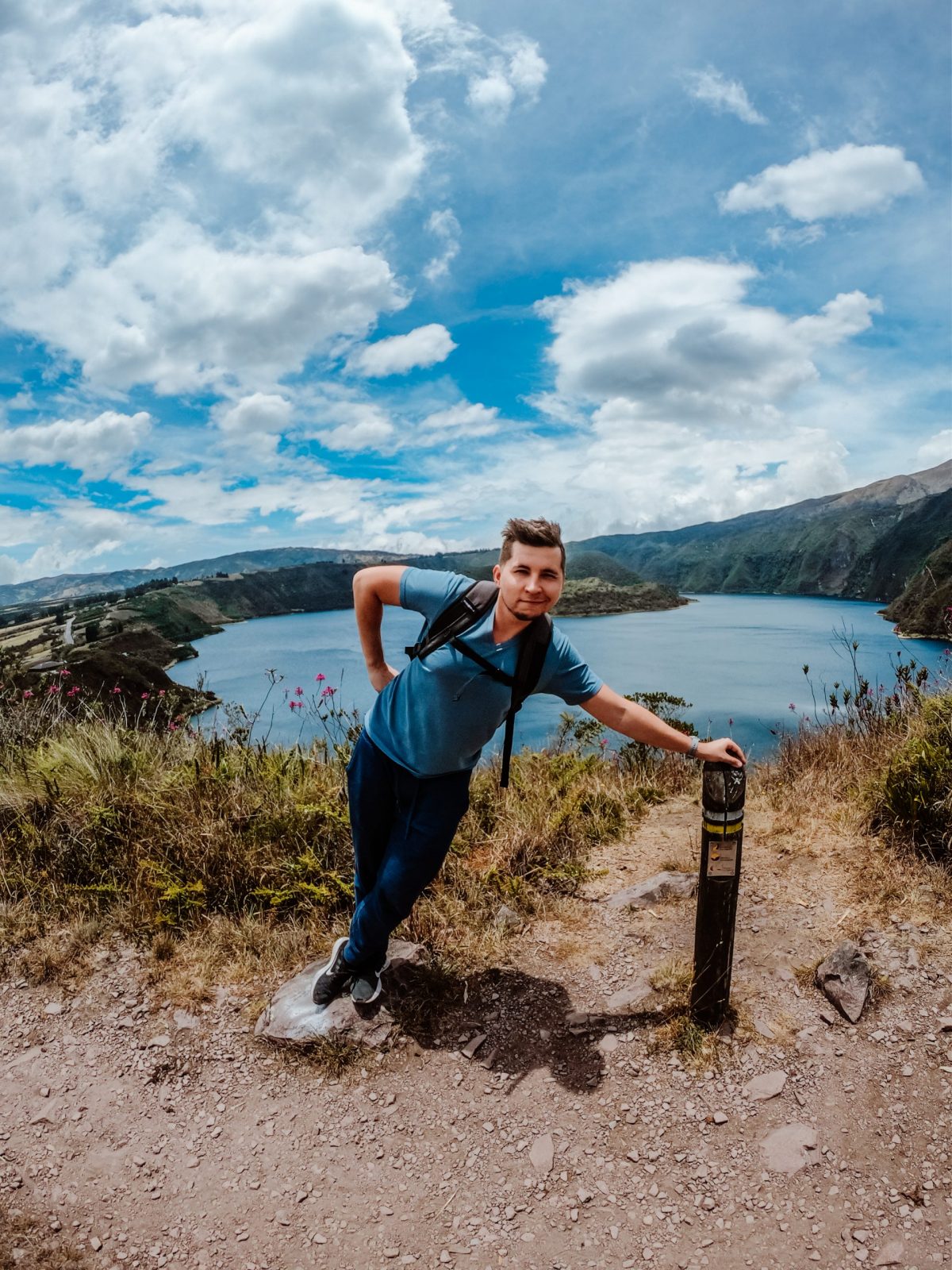
Planning trip to Ecuador?
My wife and I rented a car for 15 days and traveled from the northern part of Ecuador to the south, visiting amazing cities like Quito, Otavalo, Baños, Cuenca, and Guayaquil. Along the way, we explored iconic places such as Cotopaxi National Park, Quilotoa Lake, and many more breathtaking destinations.
Not many blogs cover traveling in Ecuador in detail, so I spent nearly three weeks creating this comprehensive Ecuador travel guide based on our trip. It’s packed with everything you need to know, and honestly, I consider it the best free travel guide about Ecuador out there.
If you’re planning a trip to Ecuador, don’t forget to use my link for discounted hotel prices through Booking.com. It’s a great way to support my blog while saving money on your accommodations!
Bottom Line
Overall, our visit to El TelefériQo was absolutely worth it! It’s definitely a must-see spot if you’re exploring Quito. If you’re planning to spend a few days in the city, I highly recommend adding this experience to your itinerary. The breathtaking views and unique adventure make it a highlight you won’t want to miss. Once again, if you don’t have Spanish knowledge, and worried to explore on your own, just get one of these tours below:
El TelefériQo should be on top of your list of places to visit in Quito.


